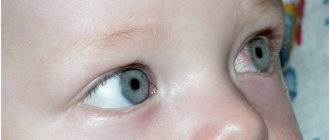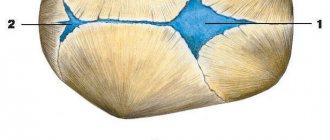Pyeelectasia is a pathological expansion of the renal pelvis. This violation is secondary, that is, it occurs against the background of others. Pyeelectasia is an indirect sign indicating a violation of the outflow of urine from the pelvis. The root cause of the pathology is hidden in some anomaly or infection.
When detected in a fetus or newborn, the disease is congenital. It can be unilateral, when only the right or left kidney is affected, and bilateral, with the entire paired organ affected. It is worth noting that, according to statistics, the disease is more common in males.
What kind of illness is this?
The renal pelvis is a collection of calyces; it is in them that urine accumulates, and then from here it enters the ureter and is excreted from the body through it. But if, under the influence of negative factors, the outflow of urine is disrupted, and an expansion of the renal pelvis occurs in adults or children, pyelectasis is diagnosed. As the pathology progresses, not only the pelvis is affected, but also the calyx and ureter. The problem can appear in newborns and adults, but sometimes it is found during pregnancy. If the disease is not treated promptly, hydronephrosis develops, ultimately leading to renal failure.
Drug treatment
Bilateral pyelectasis in a child is a pathological condition of the organs responsible for excreting urine, which leads to an enlargement of the pelvis. This condition is mainly diagnosed in children and men, due to the physiological characteristics of their genitourinary system.
Renal pyeloectasia, depending on the location, degree of damage and performance of the excretory system, involves the use of a wait-and-see method, surgical intervention (in very severe cases), as well as drug treatment. For example, if pyeelectasis is detected in a newborn or a child under 3 years of age, the urologist recommends waiting, subject to constant examinations and ultrasound. The same tactics can be used for an adult who has the first degree of the disease.
Possible complications
If treatment for renal pyeloectasia is not started on time, stagnation of urine in the renal pelvis can provoke a number of serious consequences, including:
- pyelonephritis is an inflammatory process, the most common complication of pyelectasis;
- kidney sclerosis;
- necrosis and atrophy of renal tissue;
- renal failure;
- megaureter - lengthening and expansion of the ureter;
- ureterocele - enlargement of the ureters with a simultaneous decrease in the outlet, disrupting the process of urination;
- ureteral prolapse – its prolapse into the vagina or urethra;
- vesicoureteral reflux – the reflux of processed urine back into the kidneys;
- decreased immunity;
- intoxication;
- blood poisoning;
- death.
This diagnosis is not a death sentence. With correctly selected and timely therapy, curing pyeelectasis is not difficult. This will contribute to a full life and save a person from unpleasant consequences. Take care of your health and if you suspect the development of the described disease, go to the hospital.
Ultrasound for pyelectasis
During the period of planned diagnostics, starting from the 17th week of pregnancy, pyeelectasis of the unborn baby is detected. Hydronephrosis and pyelectasia are detected using a survey ultrasound of the abdominal cavity or ultrasound of the kidneys. In addition, X-ray contrast examinations (urography, cystography) can be performed. The volume of the pelvis should not change after urination. When diagnosing a disease, it is important to do an ultrasound after the baby is born.
Due to the physical distinctive features of the structure of the genitourinary apparatus, congenital pyelectasis is more common in boys than in girls, but it goes away more quickly. No therapy will be required. To fully monitor the dynamics of the expansion of the pelvis, ultrasound is performed four times a year. Anatomically, the kidney in a child with pyeelectasis on the left is slightly larger and located higher - this is important when reading the diagnostic report.
Urolithiasis also requires ultrasound, x-rays of the kidneys, computed tomography and other methods to detect clear localization of stones and track their movements. The final diagnosis is established by a pediatrician or urologist based on the conclusion of an ultrasound diagnostic specialist.
The main way to reveal renal pyelectasis is research. For the first time, such a disorder can manifest itself during the period of intrauterine formation. After the birth of children, the study should be carried out every 2-3 months up to 1 year, and after that - once every six months. In addition to ultrasound, it is recommended to periodically take a urine test (general, according to Nechiporenko, etc.).
With renal pyelectasis, ultrasound reveals the following results of this pathology:
- megaureter – enlargement of the ureter;
- urethrocele - the ureter sinks into the bladder, swells into a bubble, and access to it narrows;
- vesicoureteral reflux – urine flow in the other direction;
- hydronephrosis – accompanied by dilation of the pelvis, but the duct remains compressed;
- ectopia of the ureter - the duct is immersed in the urethra in boys, and in the vagina in girls;
- the presence of posterior urethral valves leads to bilateral pyelectasis and dilatation of the ureters.
If indicators of disease progression are detected, additional methods of study are prescribed: cystography, excretory urography, CT scan of the kidneys.
Main causes
Enlargement of the renal pelvis occurs due to congenital pathologies of the development of the organs of the genitourinary system. The size of the pelvis also increases due to acquired factors, for example, the following:
- hormonal and endocrine disorders;
- infectious and inflammatory complications in the urinary system;
- injury;
- formation of tumors of various etiologies;
- formation of stones in the kidneys, bladder, ureters;
- other pathologies, with the progression of which the lumen of the urethra decreases.
Pyeelectasis in the kidneys develops due to tumors, infections, urolithiasis, injuries, hormonal or genetic disorders. Due to these reasons, urine cannot pass normally through the affected area. As a result, fluid is retained, and the ureter and pelvis become pathologically dilated. Such a violation can develop on the right and left, which is extremely dangerous, or one of the sides is affected. Pyeloureterectasia in newborns is a consequence of underdevelopment of the musculo-ligamentous apparatus of the genitourinary system. The disease is more often diagnosed in children born prematurely, as well as in babies with low birth weight. In infants, an enlargement of the renal pelvis is accompanied by perinatal damage to the nervous system, in which muscle tone is impaired. This provokes a violation of urine circulation, as a result of which fluid stagnates in both kidneys.
Symptoms in preschool children
With pyeloectasia, children are usually bothered by pain in the back, groin and abdomen; the pain may periodically appear and then subside. A common manifestation of this disease is the presence of pus in the urine, which is expressed in its turbidity. The single volume of urine excreted often changes. So, in children this condition can be detected by parents, but older people can usually ignore this symptom.
Some time after the disease develops, the patient may experience intoxication of the body, as a result of which the child may experience nausea, general malaise, and also refuse to eat.
In men, the ureter may prolapse into the urethra, and in women, into the vagina. The orifice of the ureter narrows, and a cystic and spherical protrusion of the intravesical section in the ureter is formed. Urine from the cavity returns through the ureter to the kidney. An expansion of the ureter may also occur, accompanied by disruptions in the functioning of the urinary organs.
Surgery
If conservative methods do not produce results, you should consult a surgeon. If he recommends surgery, you should undergo a comprehensive diagnosis, which allows you to assess the general condition of the patient and the functionality of the entire urinary system.
The operation is mandatory if the ureter is narrowed and the pelvis is significantly enlarged.
Traditional treatment
Enlargement of the renal pelvis in a child is a rather rare pathology that does not occur without cause. It is noteworthy that this pathology is not always considered a disease; usually pyeelectasis is the result of a functional disorder, without a pathological cause. But if a pathology is detected in a child, it is necessary to conduct an additional examination as soon as possible and be under the supervision of a doctor.
Traditional medicine offers quite a few recipes that help to effectively remove all the symptoms of pyeelectasis of the right kidney in a child. They also help with left kidney disease. The principle of their action is based on the removal of stones, sand and salts from the urinary system. In addition, they normalize organ function and suppress the inflammatory process.
What types are there?
Depending on the source of progression of the pathology, there are 2 forms:
- Congenital. In this case, disturbances are formed during the period of intrauterine development of the fetus, when the formation of vital organs and systems occurs.
- Acquired. The occurrence of pyeloectasia in adults is facilitated by injuries to organs located in the pelvis, inflammatory and infectious complications localized in the genitourinary system, and neoplasms of various etiologies.
Considering the location, the pathology can be:
- left-handed;
- right-sided pyelectasis;
- two-sided.
Detection of disease in newborns and fetuses
In newborns, renal pyeloectasia is often congenital and may be associated with fetal malformations. This disease is mainly determined by performing an ultrasound scan between the 16th and 20th weeks of pregnancy.
This type of congenital pathology of the urinary system can occur due to harmful effects on the body of the fetus and mother during pregnancy, and it is also influenced by its genetic nature.
Course of the disease without surgical intervention.
It is important! Pyeelectasis has three forms: severe, moderate and mild. Mild forms do not require any treatment and go away on their own. In many cases, pyeelectasis in newborns disappears after birth due to the maturation of the urinary system. In some cases, conservative treatment is necessary; severe cases of the disease require surgery.
Degrees and signs
Pyeelectasis of the right and left kidneys has 3 stages of progression:
Mild degrees of renal pyeelectasis do not require therapy, while others do.
- Easy. In such a situation, there is no need to undergo a special course of treatment; it is enough to regularly visit a nephrologist and take a urine test.
- Moderate pyelectasis. In this case, adequate treatment and constant monitoring of the patient is required; ultrasound of the kidneys is regularly performed, which shows echo expansion.
- Severe degree. An enlarged pelvis does not respond to conservative treatment; the only treatment procedure that helps get rid of the pathology is surgery.
In mild or moderate progression, a person is often not bothered by signs of the disorder. More often, unilateral or bilateral pyelectasis is diagnosed accidentally, during a routine visit to the doctor. If the disease progresses, due to stagnation of urine, signs of inflammation and infection develop.
Diagnosis of renal pyelectasis
Pyeelectasia detected in an infant is usually congenital and is often associated with developmental defects. In this case, the disease is diagnosed during pregnancy, by performing a routine ultrasound from 16 to 20 weeks of pregnancy.
Congenital pathology occurs due to the impact of adverse factors on the body of the fetus and mother during pregnancy. In addition, the cause may be genetic predisposition.
Pyeelectasia can occur in three forms:
- light;
- average;
- heavy.
The first ones do not require any measures and go away on their own after a while. Very often, the disorder disappears after the urinary system in newborns matures. A more complex course requires conservative treatment. The severe form can only be eliminated through surgery.
- A child who has been diagnosed with a disorder must be taken for an ultrasound scan every 3 months in the first year of life, and then once every six months. If the disease progresses or a urinary infection occurs, a urological examination is performed, which necessarily includes intravenous urography (excretory) and cystography (radioisotope study of a paired organ).
- Based on the data obtained, the root cause of the violation is determined, as well as the degree and level of outflow disturbance. The results allow us to select optimal treatment measures. These two types of studies are absolutely safe for an infant, but are carried out strictly as prescribed by the doctor.
When performing an ultrasound during pregnancy, the norm of the pelvis in the second trimester is 5 mm, and in the third - 7 mm. When an increase of more than 10 mm is observed, they speak of pyelectasis.
In adults, pyeelectasis is usually diagnosed when a person seeks medical help for a completely different disease of the urinary system. An ultrasound is prescribed to confirm or refute the diagnosis.
Diagnostics
In most cases, doctors are able to detect the development of the pathological process even before the birth of the child, that is, during pregnancy.
If pathological processes have already been identified, the patient should be regularly examined by a doctor. Ultrasound examination most often diagnoses moderate pyeloectasia, pyeloectasia of both kidneys and other forms of the disease. Ultrasound evaluates the condition of the renal pelvis after and before urination, changes in size over a certain period.
Urography and cystography are indicated as additional examination methods - the introduction of a contrast agent intravenously and into the urethra, respectively.
Symptoms and complications
If everything is clear with the temporary form of pyeloectasia during pregnancy, then another type, occurring against the background of an infectious disease, poses a particular danger in such a difficult period.
The disease can cause difficult childbirth and a problematic postoperative period. If a pregnant woman is diagnosed with kidney stones, then surgery is prescribed immediately.
At the beginning of the disease, no symptoms may be observed at all. Only the bilateral form manifests itself immediately, stagnation of urine occurs, pain in the lumbar region, the outflow of urine almost stops, and the temperature rises.
In the case of pyeloectasia, it is not the disease itself that is dangerous, but the cause of its occurrence. When it is difficult to pass urine, stagnation occurs, which can lead to damage to the kidney tissue and serious pathology of acute renal failure. In addition, against the background of pyelectasis, a lot of inflammatory processes occur in the renal area.
Particular attention should be paid to urine, even without laboratory testing and ultrasound; when urinating, the urine will be cloudy and contain blood. Complications of the disease include:
Complications of the disease include:
- Enlargement of the upper part of the kidney.
- Change in the width of the ureter.
- A sharp increase in pressure in the bladder.
- The process of urine returning back to the pelvis.
- Acute renal failure.
- The occurrence of an inflammatory process.
- Insertion of the ureter into the vagina.
In some severe cases of the disease and complications that arise, experts recommend termination of pregnancy to protect the woman’s life.
Why is pyelectasis dangerous?
If the diagnosis has confirmed that a person has an enlarged renal pelvis, it is necessary to immediately begin therapy, because the pathology does not go away on its own and causes life-threatening complications. Due to impaired urine output, organ tissues are compressed and atrophy over time. This leads to the fact that the paired organ ceases to function normally, as a result of which kidney failure develops. Pyeloectasia of the left or right kidney is often the cause of the progression of pyelonephritis, the chronic form of which also provokes kidney failure.
Symptoms and consequences
Left-sided and right-sided pyelectasis with moderate and moderate severity develop asymptomatically, which complicates the diagnostic process. Bilateral pyelectasis may be accompanied by a more severe symptomatic picture.
Signs of pathology:
- The gradual destruction of kidney tissue is characterized by an increase in the volume of connective tissue.
- A decrease in volume and disruption of the outflow of urine leads to a gradual accumulation of harmful substances and compounds.
- Inflammation of the kidneys develops against the background of impaired urine outflow, accumulation of decay products and a decrease in the resistance of the body's immune forces.
- Decreased or complete impairment of kidney function.
Manifestations of pyelectasis in adults:
- Ectopic urethra is a disorder of the structure of the urinary tract, in which the ureter has an outlet into the urethra in men and into the vagina in women.
- Urethrocele is compression of the urethra and narrowing of its opening.
- Disturbance of the urethral valves.
- Ureterovesical reflux is characterized by the reflux of urine into the kidney in the presence of obstacles to its outflow.
- Megaureter develops against the background of urethrocele, which increases bladder pressure.
What treatment is prescribed for renal pyeloectasis in adults and children?
Depending on the intensity of progression of pyeloectasia of the left or right kidney, the doctor decides how to properly treat the problem. In newborns, this pathology is temporary, so special treatment is not required. It is only important to regularly see a doctor and follow all his recommendations. If in men or women pyeloetasia is accompanied by an inflammatory complication with accompanying symptoms, a course of antibacterial and anti-inflammatory therapy is prescribed.
Congenital renal pyeloectasia in children tends to go away on its own.
If the disease does not go away on its own, the person’s condition worsens, and signs of renal failure become pronounced, a decision is made to perform a surgical operation, during which the normal flow of urine is restored, if necessary, correction of congenital anomalies is carried out, stones and tumor formations are removed. The operation is often performed endoscopically, which significantly reduces the risk of developing postoperative consequences in a woman, man or child.
Reasons and features
The disease is not classified as independent. Pyeelectasis in an infant is a consequence of another pathology. Deviations in the functioning of the urinary system lead to the problem.
A congenital disorder is a consequence of the mother’s illness during gestation or uneven, from a physiological point of view, development of the child.
If pyeelectasis affects the right side, the child is diagnosed with a pathology of the right kidney, and on the opposite side - the left one. Rarely, dilatation of the pelvis of both kidneys occurs.
Bilateral pyelectasis in infants is dangerous because the body does not cope well with urine excretion. If you do not intervene in time, kidney atrophy will occur. Children over 5 years of age rarely suffer from this disease. Different periods of development are characterized by their own norms of renal pyelectasis in a child.
A newborn's kidneys form while in the mother's womb. Pyeelectasis in the perinatal period occurs when there are genetic abnormalities in the mother’s body.
Using an ultrasound, the doctor immediately determines what it is. Pyeelectasis of the left kidney in a child is rarely detected.
| Age | Kidney pelvis size |
| Fetus up to 32 weeks | 4-5 mm |
| 36 weeks - birth | 7-8 mm |
| Newborn - up to 1 month | No more than 7 mm |
| Baby up to 1 year | 6-7 mm |
Developmental disorders at an early stage are not considered dangerous to health. Due to the anatomical features of the body, boys suffer from the disease more often than girls. Other pathologies also lead to expansion of the pelvis.
Harmful external influences on the woman’s body lead to the appearance of problems during intrauterine development.
Stress and infections in the mother during pregnancy lead to illness in the child, which will be congenital in nature.
The acquired problem results from the following disorders:
- problems with urination in a child;
- weakened muscles (especially in premature babies), insufficient development of organs;
- pathology of the transition valve from the pelvis to the ureter;
- abnormal development of the child’s urinary system due to compression by other organs.
Diagnostic measures
To definitely establish a diagnosis, a specialist will definitely prescribe laboratory and hardware examination methods.
At the first appointment, the doctor should examine the patient’s medical history in detail. This will allow us to calculate the causes and take all necessary measures for treatment and prevention.
During examination, an experienced specialist detects the problem by palpation. Most often, pronounced swelling and puffiness is formed with severe pyelectasia or hydronephrosis.
It is especially possible to accurately determine bladder distension and kidney enlargement when the patient is thin. In people with increased body weight, this determination is complicated.
The most effective and popular way to diagnose the disease remains to this day - ultrasound.
With the help of the device, the performance of the CLS and ureters, as well as any anatomical changes, is detected.
During an ultrasound, a specialist can observe how full the bladder is, as well as what prevents urine from passing through the outflows.
With the help of ultrasound, not only the condition of the organs is revealed, but also the causes of the emerging pathology.
In addition, other hardware diagnostic methods are used, which will determine the severity of the impact on the body and the resulting complications. This:
- Endoscopic methods. Anomalies, volumetric processes, the state of the peripheral joint and the formation of stones and adhesions are determined.
- Chromocystoscopy and angiography. They allow you to observe the process of blood flow, the presence of strictures and signs of obstruction.
- Retrograde ureteropyelography.
- Exretory urography.
A number of laboratory tests will also be required:
- Blood chemistry. It is used to detect the presence of urea, creatinine and electrolyte levels.
- General urine analysis. With pyelectasia, urine contains a high concentration of hematuria, leukocytes and pyuria.
After all diagnostic measures have been completed, adequate treatment is prescribed. Much will depend on the severity of the development, the presence of complications, and the cause.
At the initial stage, no treatment may be required, but at the same time, the person should regularly visit a doctor and undergo examinations.
Treatment
At the initial stage, no special therapy is required. The efforts of the newborn’s body are enough to cope with the problem on its own. Treatment of pyeloctasia in children begins when the disease progresses to a moderate and severe form.
At the second stage of the disease, the doctor prescribes medications appropriate to the age of the small patient. Not only the degree of damage is taken into account, but also the cause of the problem.
If the disease is the result of a kidney infection, appropriate medications are prescribed to eliminate the causative agents of the disease. A baby in this condition needs a special diet.
Severe cases of the disease require surgery. The reason for radical measures is complex unilateral pathologies. Surgical treatment is prescribed during the process of expansion of the pelvis of both kidneys.
The operation is even performed on infants if circumstances require it. The patency of the urinary tract is restored using an endoscope.
The muscle tissue is not cut with a scalpel; small incisions are made through which manipulation is carried out. The process causes minimal damage to the baby’s health.
Therapy with folk remedies
Traditional recipes can be used as an auxiliary therapy, but abandoning traditional methods of treatment is unsafe for life. In case of an inflammatory complication, it is recommended to drink as much fluid as possible for a speedy recovery. You can prepare a vitamin infusion:
- pour a handful of rose hips into a thermos and pour 2 liters of boiling water;
- leave for 2-2.5 hours, add a spoonful of honey before use;
- drink every day until the condition returns to normal.
Effective recipes
To treat pyeelectasis of the left kidney (and right) in a child, the following recipes are used:
- Infusion of juniper fruits, birch buds, dandelion roots: take 1 tbsp. l. well crushed raw materials of each plant, put in a thermos and pour 1 liter of boiling water. After 12 hours, the broth is filtered and taken 0.5 tbsp. three times a day.
- Infusion of adonis, oats, horsetail and nettle: as in the previous version, take a mixture of all ingredients, pour boiling water over it, infuse for 12 hours and take 50 ml 4 times a day.
- Knotweed infusion: it is recommended to prepare this drink for your child daily. To prepare it, 1.5 tbsp. l. herbs need to be poured 1 tbsp. boiling water and leave for 2 hours. The strained drink is taken in small sips throughout the day.
- Vitamin infusion from rose hips: a handful of fruits are poured into a thermos and 2 liters of hot water are poured. The infusion should be kept for 2 hours and taken a little every day until the condition is completely normalized. You can add just a little honey to the infusion to improve its taste. Also, for pyeloectasia, it is useful to drink infusions of black currant, cranberry and lingonberry.
- Infusion of dye madder for pyeloectasia in a child on the right or left: it is necessary to finely chop the roots of the plant, add 1 tbsp. l. plants into a saucepan and pour 1 tbsp. hot water. The prepared solution must be brought to a boil and boiled for about 7 minutes over low heat. Then the broth is cooled, filtered and taken before meals, 50 ml. It is important to remember that this folk remedy can turn a child’s urine red - you should not be afraid of this!
The duration of treatment must be agreed with the doctor, especially if we are talking about a child. If indicated, surgical procedures may be necessary.
Prevention
Timely treatment of diseases and a healthy lifestyle reduce the risk of developing renal pyelectasis. It is impossible to prevent the development of congenital pyeloectasia, but acquired pathology can be prevented. If a person has already had such a disease, then from now on it is important to be attentive to health, promptly treat inflammatory and infectious diseases, and not refuse to undergo routine medical examinations. It is also worth protecting the kidneys from hypothermia; with a sedentary lifestyle, when there is a risk of developing stagnant processes in the organ, it is recommended to perform warm-up physical exercises during the day as a preventive measure. If the problem begins to develop during pregnancy, the woman needs to undergo regular tests and monitor the condition.
Treatment of pyelectasis in a child
It should immediately be noted that no treatment is prescribed for a newborn child, as this can lead to negative consequences, for example, fetal death. As a child grows, his organs also undergo changes, so the organ can move to the correct place. In this case, the symptoms of the disease will evaporate.
Attention! If, on the contrary, the pelvis continues to expand, then it is urgently necessary to carry out a diagnosis and determine the characteristics of the disease and the reasons for its occurrence. After this, the doctor prescribes the necessary course of therapy.
Typically, such treatment is aimed at restoring the normal functioning and condition of the ureter. The goals are to ensure normal urine flow and remove foci of inflammatory processes, if present. To prevent complications, do the following:
- Regularly undergo ultrasound examinations: approximately once every three months;
- Maintain hygiene standards;
- Try to prevent inflammatory processes in the organs of the genitourinary system;
- Provide your child with proper nutrition.
So we looked at all the features of such a disease as pyelectasis in children. The main thing is don’t run it!











